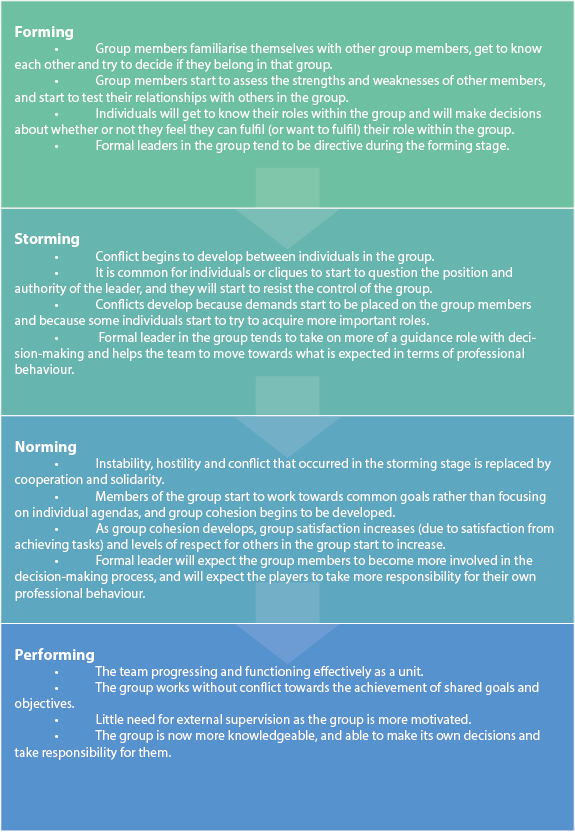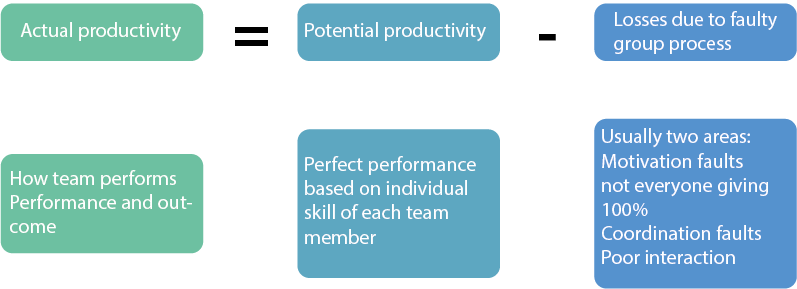Content
- Formation of groups
- Social cohesion theory
- Leadership theory
- Leadership style
- Chelladurai’s leadership model
There must be interaction between individuals in order for them to be classified as a group. An interpersonal attraction and a collective identity is needed – the members of the group must perceive themselves to be a distinct unit. The group must have shared goals, targets, norms and values, and be prepared to achieve these goals collectively.
All of these characteristics are common in teams, but there are some key differences between a group and a team. The main difference relates to the pursuit of shared goals and objectives within a team.
For a group of people to become a team, they must go through four developmental stages (Tuckman, 1965):
All groups go through all stages, but the time they spend at each stage and the order in which they go through the stages may vary.
Once a team has progressed through the four stages, it does not mean that they will not revert back to an earlier stage. If key members leave, the team may revert back to the storming stage as others begin to vie for position within the team.

‘The extent to which a group sticks together in pursuit of a common goal’.
Group cohesion can be sub-divided into:
Task cohesion – the way team members work together to successfully complete the task.
Social cohesion – personal relationships within the group, enjoying social interaction.
Both types of group cohesion influence performance, however task cohesion is closely linked to successful performance.

The Ringelmann effect is whereby as the group size increases, individual productivity decreases. This is linked to motivation fault and is associated with athletes ‘hiding’ in large groups and not being accountable for their own performance.
This refers to a group member not giving 100% effort in a team/group situation; this is generally due to that display social loafing often lack confidence, are afraid of failure and tend to be highly anxious. It is often the case that players who display social loafing do not feel they can make a useful contribution to overall team performance, which can be why they don’t want to participate.
Factors affecting cohesion, e.g. national identity of Welsh rugby.
Carron’s theory (1982) states that there are four factors that affect team cohesion:
Environmental factors – groups that are closer in terms of location, interact and form relationships better (smaller groups are more effective).
Personal factors – individual characteristics are important for group cohesion. Players from similar backgrounds tend to have similar attitudes, commitment and opinions and therefore likely to be cohesive.
Leadership factors – leadership style, and behaviour needs to be compatible with athletes’ personalities.
Team factors – length of time a team is together, allowing them to experience success and failure together. The creation of ownership and decision-making is likely to be productive and cohesive.
If cohesion is achieved, the team and individuals can experience both success in team outcome goals and individual performance goals. It is not necessarily the case that high levels of cohesion achieve higher levels of performance, however for sports that are interactive (team games) it is important.